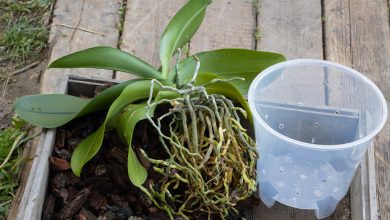Durillo: [Cultivation, Irrigation, Care, Pests and Diseases]
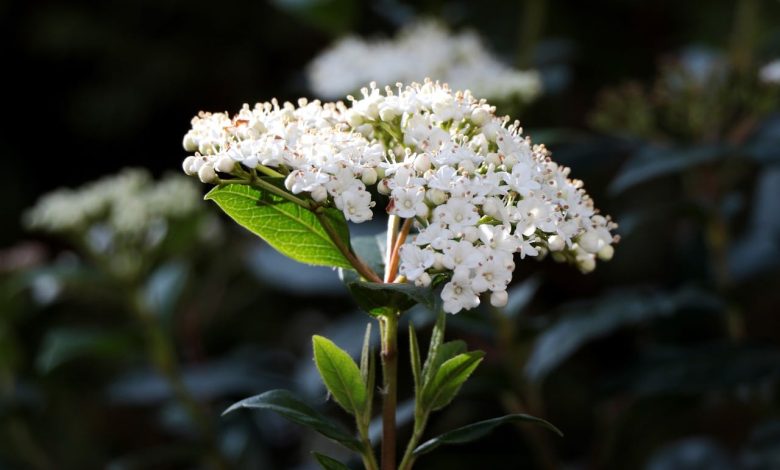
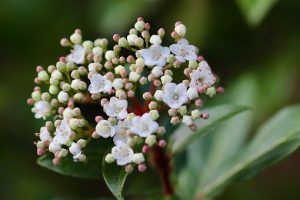 Viburnum tinus is a species native to the temperate forests of the Mediterranean region. It stands out for its great ornamental value and for its adaptability as it can be planted in the ground and in pots.
Viburnum tinus is a species native to the temperate forests of the Mediterranean region. It stands out for its great ornamental value and for its adaptability as it can be planted in the ground and in pots.
This tree is known for its medicinal properties. It is used in traditional medicine to reduce fever, as a purgative, as well as to improve some symptoms of depression.
The name «tinus» indicates the similarity that the durillo has with the leaves of the laurel by calling it «wild laurel».
Important points when planting a durillo:
- Scientific name: Viburnum tinus.
- Common name: Durillo, duraznillo, barbalija, duraznillo, laurentino, wild laurel
- Height: 3 meters.
- Light Need: Full sun and partial shade.
- Temperature: Temperate climates (18ºC to 20ºC).
- Irrigation: Moderate.
- Fertilizer: Granular, organic or liquid fertilizer.
What characteristics does the durillo have?
The Laurustinus is a shrub that generally grows up to 3 meters in height, growing up to 4 meters more. This shrub is made up of branched stems from which elliptical leaves of a dark green color sprout.
These have can measure from 4 to 5 centimeters wide and up to 10 centimeters long. The flowers, one of the main attractions of the durillo, are very aromatic and small.

They are grouped in leafy white umbels, which bloom twice a year: at the end of winter and at the beginning of spring. Its fruits are small fleshy and slightly aromatic berries with a dark metallic blue hue. They contain only one seed per fruit.
When to sow the durillo?
To sow the durillo by means of seeds, it should be done in spring, at the end of summer or at the beginning of autumn. In case of reproducing it by means of cuttings, or grafts, it is recommended to do it during the months of March to August.
Where to plant the durillo?
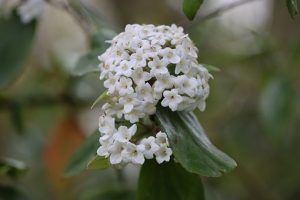 The durillo is typical of temperate climates with mild winters. Although it has the ability to resist temperatures down to -15ºC, it is preferable not to expose it to temperatures of -5ºC for prolonged periods.
The durillo is typical of temperate climates with mild winters. Although it has the ability to resist temperatures down to -15ºC, it is preferable not to expose it to temperatures of -5ºC for prolonged periods.
Also, this shrub thrives in bright areas, in semi-shade. It can also grow in full sun areas, but should be protected from direct light at an early age.
The durillo is a very good option to use as a screen or hedge, either in gardens or roundabouts. In the case of growing it in pots, it could be placed to decorate terraces and balconies.
How to prepare the land?
The wild laurel prefers loose, well-aerated, moderately humid and rich in organic matter substrates. In the case of pots, a universal substrate can be used.
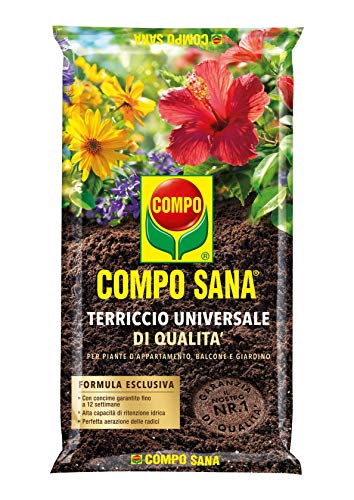
In order for the soil to be ready, it is recommended to clean the area of weeds and remove the soil to give it porosity. It is important that it has good drainage, which can be improved by adding a little organic matter.
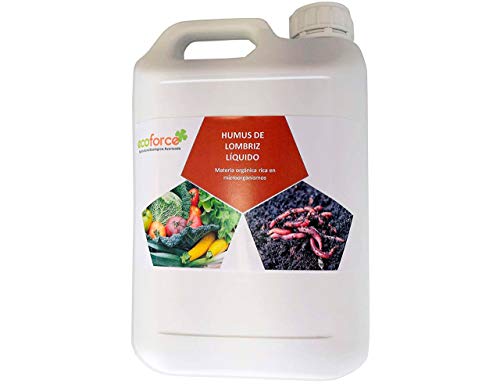
To improve the soil, it is recommended to apply 10 grams per plant of granular fertilizer during the spring, or organic fertilizer 3 times a year.

In the case of growing in a pot, liquid fertilizer should be applied during the months of March to August.

How do we water the durillo?
This is an undemanding species regarding watering. However, in its early stages of growth it should be applied regularly, until it is established.
Irrigation is recommended throughout the year, especially during hot or dry seasons. On the other hand, they should be reduced during the rainy season, always avoiding waterlogging.
How often do we water the durillo?
During the first year, regular watering is needed to conserve moisture, 1 or 2 times a week, depending on the type of soil. The following year, moderate watering is recommended, applying 1 inch of water once a week.

In the case of growing it in a pot, watering will be applied more frequently, waiting for the surface layer of the substrate to dry. This can be every 3 or 4 days, but never daily, as excessive watering favors root rot.
How to plant a durillo step by step?
Laurustinus can be propagated through various techniques. However, only the steps to sow by means of seeds and cuttings will be indicated, which are shown below:
by seed
The durillo seed presents internal dormancy and has a slow rate of germination. It can be sown directly in the fall, or with a stratification treatment in the spring. The steps to perform it by the second method are:
- In a container, or seedbed, place the seeds on moist peat for 2 or 3 months, at a temperature between 20ºC and 30ºC.
- Take the container and expose the seeds to temperatures between 4ºC to 10ºC, for another 2 or 3 months.
- Once the seeds have sprouted and grown sufficiently, transplant into individual pots and moisten with a spray bottle.
- Wait until spring to plant in its final place, when it has reached a height of 10 to 15 centimeters.
by cutting
- Cut a 6- to 8-inch-long section from a branch of a healthy, mature Laurustinus .
- Of all the leaves in the section, keep only a couple and delete the rest.
- Apply a rooting solution at the base of the stem.
- Dig a hole in a pot with moist soil, bury ⅔ of the stem and press lightly.
- Keep the pot out of direct sunlight and water regularly until new leaves have sprouted from the stem.
What care does the durillo need?
The durillo needs little care. However, here are some recommendations:

- It is preferable to do the pruning during the fall, so as not to harm the spring flowering.
- Sow the durillo in pots in cold regions.
- It is recommended to wear gloves when handling it and keep it away from children and pets, as all parts of the bush are toxic.
What pests and diseases affect the durillo?
This species is frequently affected by aphids, as well as by the red spider. If they appear, a solution of potassium soap with Neem oil and water should be sprayed on the leaves, at least 3 times every 2 weeks.

To prevent its appearance, it is recommended to check the underside of the leaves regularly and take care that the humidity in the substrate is optimal, without waterlogging or scarcity, especially during hot seasons.
How long does the Laurustinus live?
There is no estimate of the lifespan of a Laurustinus. However, it is presumed that it can last more than 20 years if it is cared for correctly.
How long does it take to grow durillo?
It grows quite fast, so in a couple of years it can reach a convenient height and reach maturity.
How long does it take to produce fruit?
It usually takes 2-3 years for it to start producing fruit.
In late specimens it can be up to 5 years old, depending on the conditions.
Can it be grown in a pot?
It can be grown in a pot as long as it is kept outdoors. Does not tolerate life indoors.
How many times does the durillo produce fruit?
Its fruit production is twice a year, in late spring and late fall.
Should the durillo be pollinated to obtain fruit?
It does not need pollination, since its flowers are hermaphroditic.
How cold can Laurustinus tolerate?
It tolerates the cold very well, even its flowering is carried out during the winter with minimum temperatures of -10ºC.
However, it must be protected from strong blizzards to prevent damage.
How many durillos can be planted per hectare?
It is not a tree that requires much space, so between 150 and 300 specimens can be planted in one hectare.
What type of fertilizer does the Laurustinus need?
It is best to provide organic compost during its flowering period to help keep it healthy.
How much heat and/or drought can Laurustinus tolerate?
It tolerates high temperatures of over 35ºC very well, being a tree that needs full light to survive.
In the case of drought, it does better on dry land than with too high humidity, so it is advisable not to put too much water on it.
References
- http://agroambient.gva.es/documents/170053765/171648623/Manual+de+propagación+de+arboles+y+arbustos+de+ribera./ba346aeb-6588-4843-a813-d16ffd59080b
- http://e-spacio.uned.es/fez/eserv/tesisuned:Filologia-Jroman/Documento.pdf
- http://www.juntadeandalucia.es/medioambiente/portal_web/web/temas_ambientales/biodiversidad/5_red_centros/2_red_jardines_botanicos/00_jardines/03_el_aljibe/planta_mes_aljibe/aljibe_oct_2017.pdf
- https://teleoposicions.es/wp-content/uploads/2019/06/TEMA-6-ARBOLES-Y-ARBUSTOS.pdf
- https://www.compo.es/consejo/plantas/plantas-de-jardin/durillo
- https://revista-ae.es/wp-content/uploads/2017/03/Viburnum-tinus-1.pdf

![Photo of Purple Flowers: [List, Examples, Characteristics and Care]](https://www.complete-gardening.com/wp-content/uploads/2022/08/purple-flowers-list-examples-characteristics-and-care-390x220.jpg)
![Photo of 4 Avocado Pests and Diseases: [Causes and Solutions]](https://www.complete-gardening.com/wp-content/uploads/2022/08/4-avocado-pests-and-diseases-causes-and-solutions-390x220.jpg)

